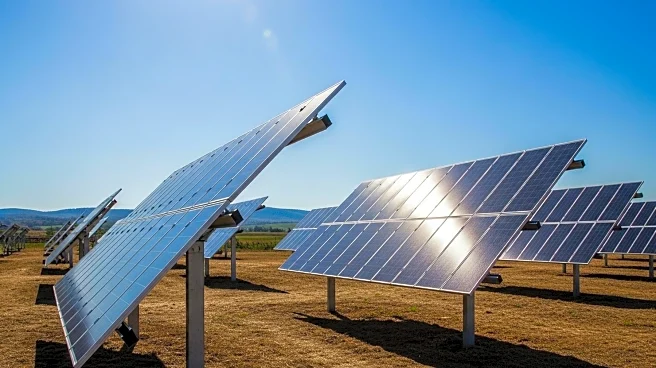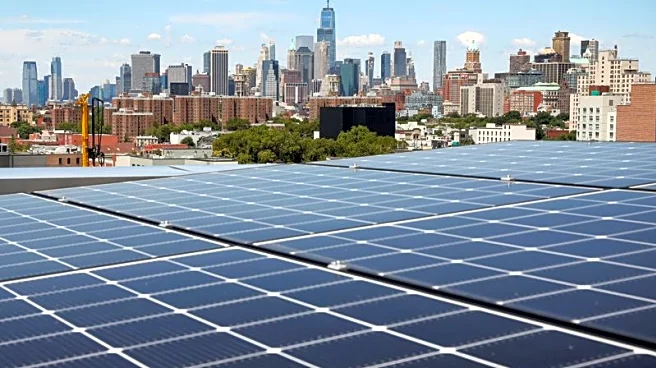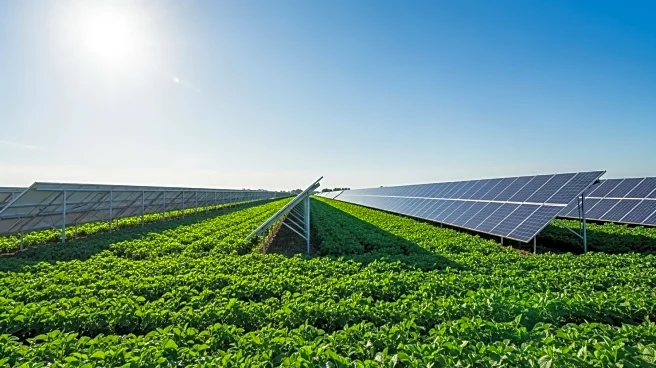What's Happening?
Monroe County, New York, is experiencing significant growth in solar energy projects, supported by incentives from the New York State Energy Research and Development Authority (NYSERDA). Since 2000, the county has completed 2,394 solar projects, generating 236 megawatts of power, enough to supply approximately 42,480 homes. Recent projects include GreenSpark Solar, Kreher Solar Farm, and Hanoverian Solar Partners, which collectively add substantial capacity and have received state funding. The cost per watt for completed projects has decreased from $9.06 in 2001 to $1.86 today, with NYSERDA incentives per watt also declining from $5.97 in 2002 to 26 cents currently.
Why It's Important?
The expansion of solar farms in Monroe County reflects broader trends in renewable energy adoption, driven by state incentives. This growth contributes to reducing energy costs and increasing sustainability, aligning with national goals for clean energy transition. The decline in project costs and incentives indicates improved efficiency and scalability in solar technology. Stakeholders, including local governments and energy companies, benefit from increased capacity and reduced reliance on fossil fuels, promoting environmental and economic advantages.
What's Next?
With 30.8 megawatts of solar capacity approved and in the pipeline, Monroe County is poised for continued growth in renewable energy. Future projects will likely further decrease costs and increase energy independence. Stakeholders may focus on optimizing funding strategies and expanding community engagement to maximize benefits. The ongoing support from NYSERDA suggests sustained investment in clean energy infrastructure, potentially influencing policy decisions and encouraging similar initiatives in other regions.
Beyond the Headlines
The solar farm expansion in Monroe County highlights the ethical and environmental commitment to sustainable energy solutions. It underscores the importance of government incentives in driving technological advancements and reducing carbon footprints. Long-term, this development may inspire cultural shifts towards greater environmental responsibility and influence national energy policies, fostering a more resilient and sustainable energy landscape.











